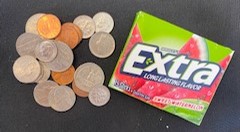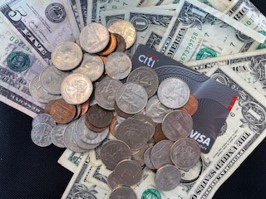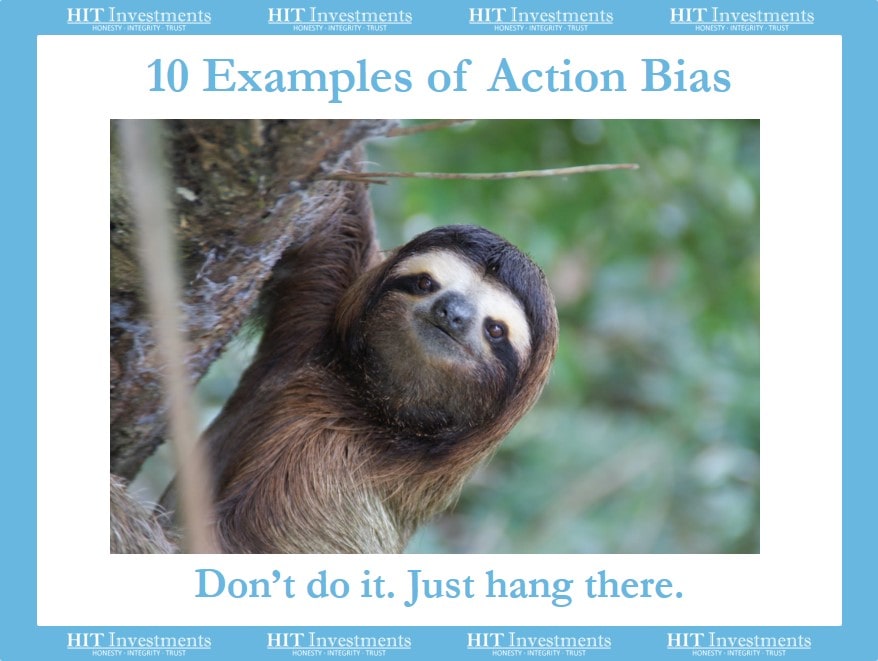In my last blog post I addressed what action bias is, and why we, as humans, tend toward this bias. Hopefully looking through a few more examples will help you identify where you tend toward action bias, and then help you set up ways to minimize its effects on you.
The following 10 examples are situations where taking action does not warrant praise and has proven more often than not to provide a detrimental outcome. The first 8 are personal finance, investment and business related, the next two are sports and physicians related, and the last one is the example of action bias I personally struggle with the most.
1. Purchasing vs saving ** 
You are in the checkout aisle and see a pack of tropical flavored sugar free gum. You purchase the gum because it is easier to picture yourself enjoying a nice chew than the stress of not paying off your credit card bill. The $2 is less than the interest you’ll owe on this month’s card balance. It is easier to see the impact of purchasing the gum now than the impact of saving $2. To put the purchasing vs saving problem into perspective, more than 54% of active credit card accounts carried a balance in the first quarter of 2021.*********
2. Trading
You own a low cost index fund and your friend tells you about a hot stock. You sell your index fund and buy the hot stock. You forget to think about your tax consequences, transaction costs, investment goals, and if the stock’s run is over. Your action bias is based on herd mentality, fear of missing out, and illusion of control. The cost and risks associated with the trade were not in line with your portfolio and financial goals but because of action bias you still made the trade.
3. High Pressure Universal or Variable Life Insurance Purchase
You own a mutual fund and you meet an insurance representative who sells life insurance that can double as an investment. Without taking home the contract and asking me or your financial advisor for a second opinion you purchase the insurance on the spot. You feel good after making the change until you find out that your investment balance is reduced by 15% from the commission paid to the insurance representative, your money is locked in for 5 years and you realize your dependents are no longer dependent and in need of life insurance. The mutual fund you previously owned is now up another 10% while your life insurance investment is down 15%, you experienced a net loss of 25% and that’s just in the first year. You have 4 more years to go.
4. Churning
Your broker has an investment recommendation every time you chat. You always agree and he moves you from one investment to another. Once tax season rolls around you realize a large capital gains tax. Further research shows that you paid front and back end load fees, and a transaction fee every time. Before you did your research you felt good after taking your broker’s tips. Unfortunately you learn that you would have done much better staying in the same investment.
5. Sell Low Buy High
The stock market drops 20% so you sell out of your investments to keep from losing more. You feel good by taking action but unfortunately the market turns and you lose out on the 20% upswing.
6. Learning Opportunity Lost
Your daughter spent her allowance and doesn’t have enough money to buy gas to get to her friend’s house. If she rides her bike she will be late so you give her $10 dollars to fill up. You feel good for helping your daughter and she arrives on time. Fast forward 10 years and your daughter is one of the 54% that can’t keep from carrying a balance on her credit card because she hasn’t learned to control her action bias to purchase now versus save for the future.
7. Corporate Takeovers
Big companies make offers to purchase their competitors above the competitors worth*****. This action bias resulted in acquisitions and mergers destroying over $218 billion in shareholder wealth over the last 20 years******
8. Destroying Company Culture
Company founders and CEO’s often approve salary and bonus increases out of rotation because employees threaten to leave. This action saves the employee but increases management debt by promoting a culture of politics. Promotions are now tied to the individual’s political strength, not improving their team or creating company value. Now someone who is more qualified gets looked over during promotion time as the number of promotions available has decreased. The CEO and founder would have been better off not taking action on this out of cycle promotion request.*******
Here are 2 more general action bias examples that most of us can easily picture.
1. Goalie Positioning *
During soccer penalty kicks goalkeepers must choose their action before they can clearly see the kick direction. After 286 penalty kicks by professional soccer players were reviewed the optimal strategy was clear for the goalkeepers to stay in the center of the goal, however the keepers chose more often than not to jump left or right. This is likely because the goalkeeper feels worse when a goal is scored when doing nothing than when taking action, therefore they succumb to action bias and jump left or right vs stay in the middle and increase their odds.
2. Doctor Recommendations ****
Primary physicians are more likely to recommend medicine or a battery of tests after reviewing unexplained complaints than they are to ask the patient to come back in a day or two to analyze them again and note changes in their symptoms. The patient and doctor both feel worse when no action is taken because inaction can come off as not caring. This incentivizes the doctor to, at times, make nonoptimal recommendations.
Lastly, this is my personal action bias example that I continue to struggle with.
1. Just Listen
My wife, Sarah, comes home bothered by something. We have put the kids down to bed and Sarah begins to share her thoughts and feelings with me. As she is sharing I infer there is a problem and before she finishes I start sharing options on how to fix it. In reality, the only problem is me. The solution is patience and giving her the time she needs to share her thoughts and feelings without interruption.
Conclusion
Hopefully while reading through these 10 examples of action bias, they sparked a thought or memory. Like I mentioned in my last post, the first step in combating action bias is acknowledging you hold that bias, and then taking steps to minimize it. If we work on our own self control and patience, we can help ourselves reduce action bias and set a positive example for those around us in the process.
References
*Bar-Eli, M., Azar, O.H., Ritov, I., Keidar-Levin, Y., and Schein, G. (2007). “Action bias among elite soccer goalkeepers: The case of penalty kicks.” Journal of Economic Psychology. 28(5), 606-621. DOI: 10.1016/j.joep.2006.12.001
**Patt, A, and Zeckhauser, R. (2000). “Action Bias and Environmental Decisions”. Journal of Risk and Uncertainty. 21(1), 45-72.
***Zeelenberg, M., van den Bos, K., van Dijk, E., and Pieters, R. (2002). “The Inaction Effect in the Psychology of Regret”. Journal of Personality and Social Psychology. 82(3), 314-327. DOI: 10.1037//0022-3514.82.3.314
****Kiderman A, Ilan U, Gur I, Bdolah-Abram T, Brezis M. (2013). “Unexplained complaints in primary care: evidence of action bias”. Journal of Family Practice. 62(8), 408-413.
*****Roll, Richard. “The Hubris Hypothesis of Corporate Takeovers.” The Journal of Business, vol. 59, no. 2, University of Chicago Press, 1986, pp. 197–216, http://www.jstor.org/stable/2353017.
******Do Shareholders of Acquiring Firms Gain from Acquisitions? (NBER Working Paper No. 9523), co-authors Sara Moeller, Frederik Schlingemann, and Rene Stulz
*******Odean, T. (1998). Volume, Volatility, Price, and Profit When Traders Are Above Average. The Journal of Finance. 53(6), 1887-1934. DOI: 10.1111/0022-1082.0007
********The Hard Thing About Hard Things, Building a Business When There Are No Easy Answers by Ben Horowitz
*********American Bankers Association’s data credit card account data



Leave A Comment